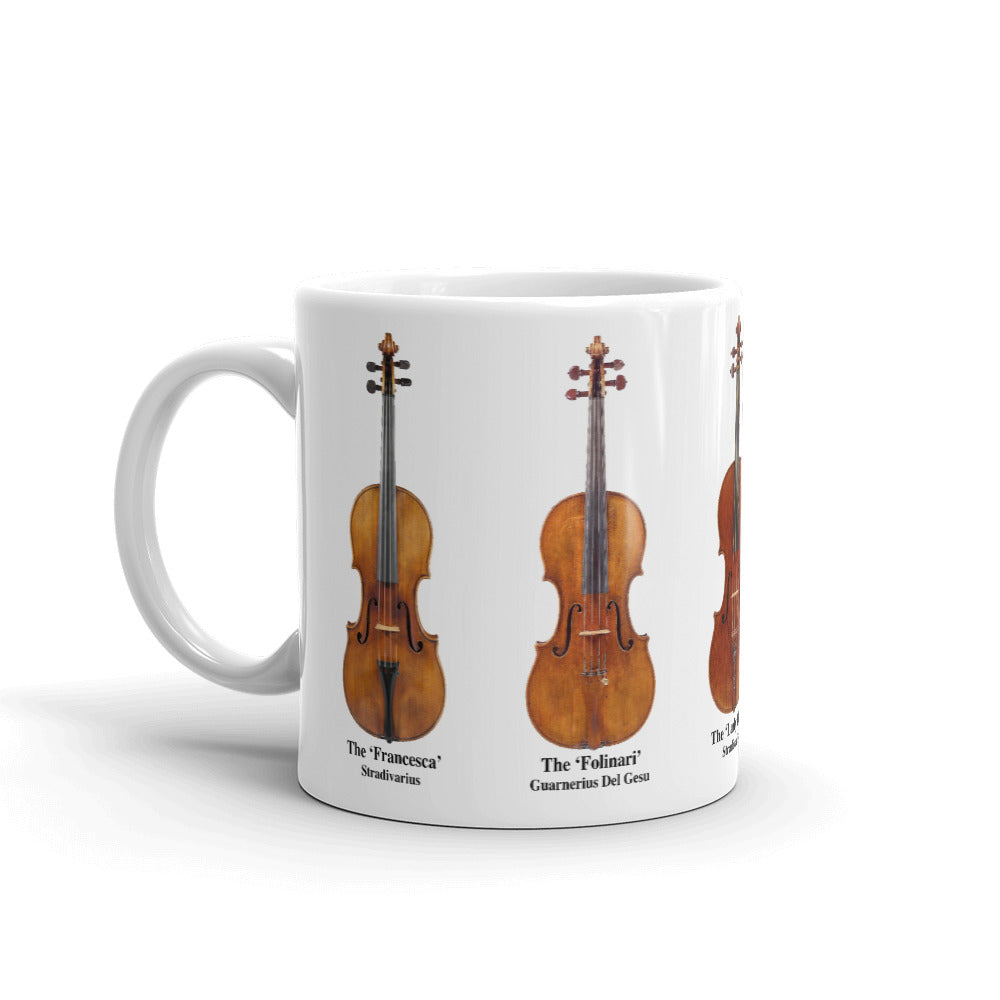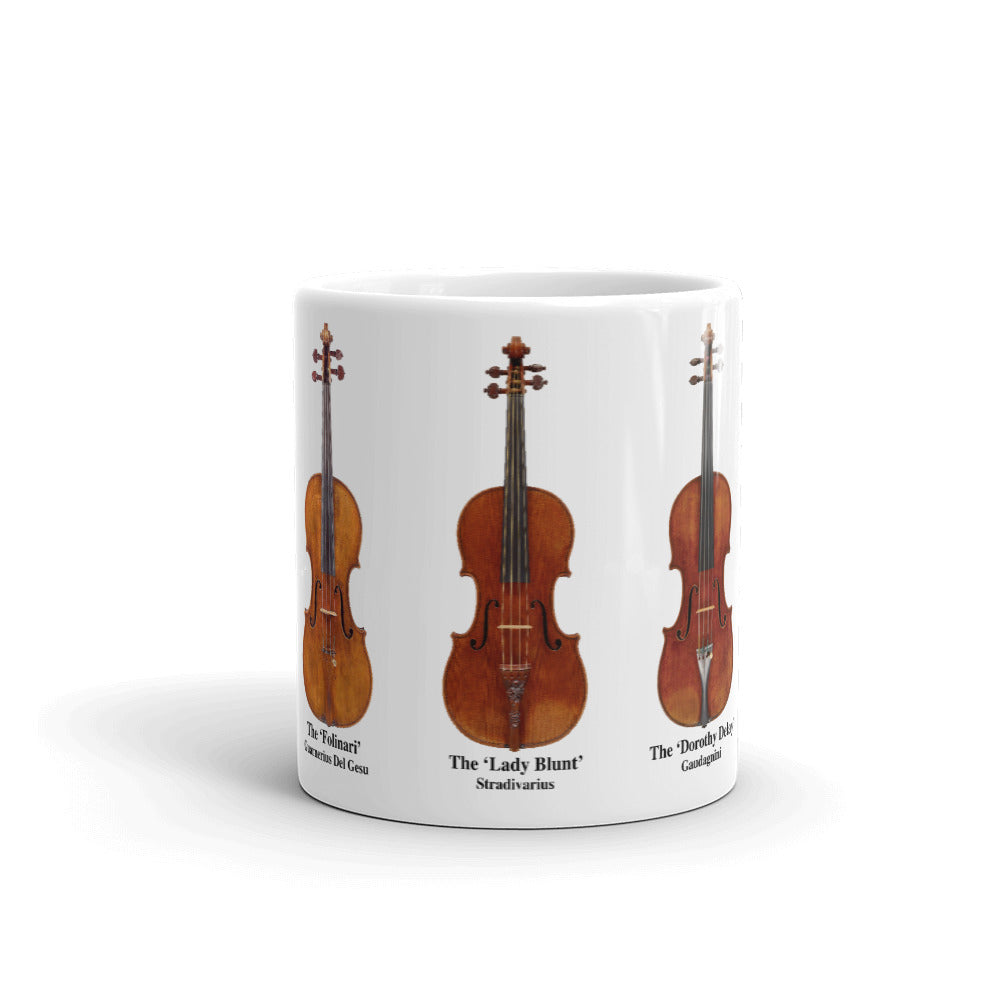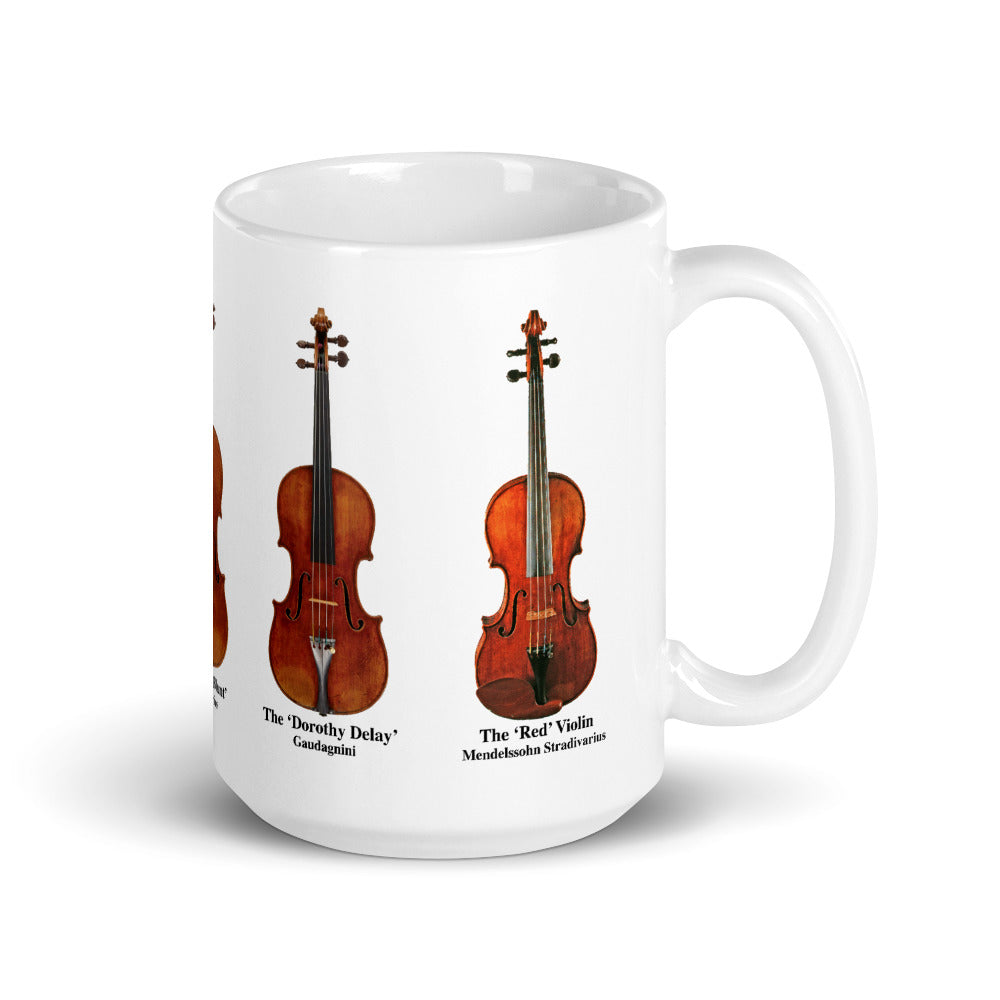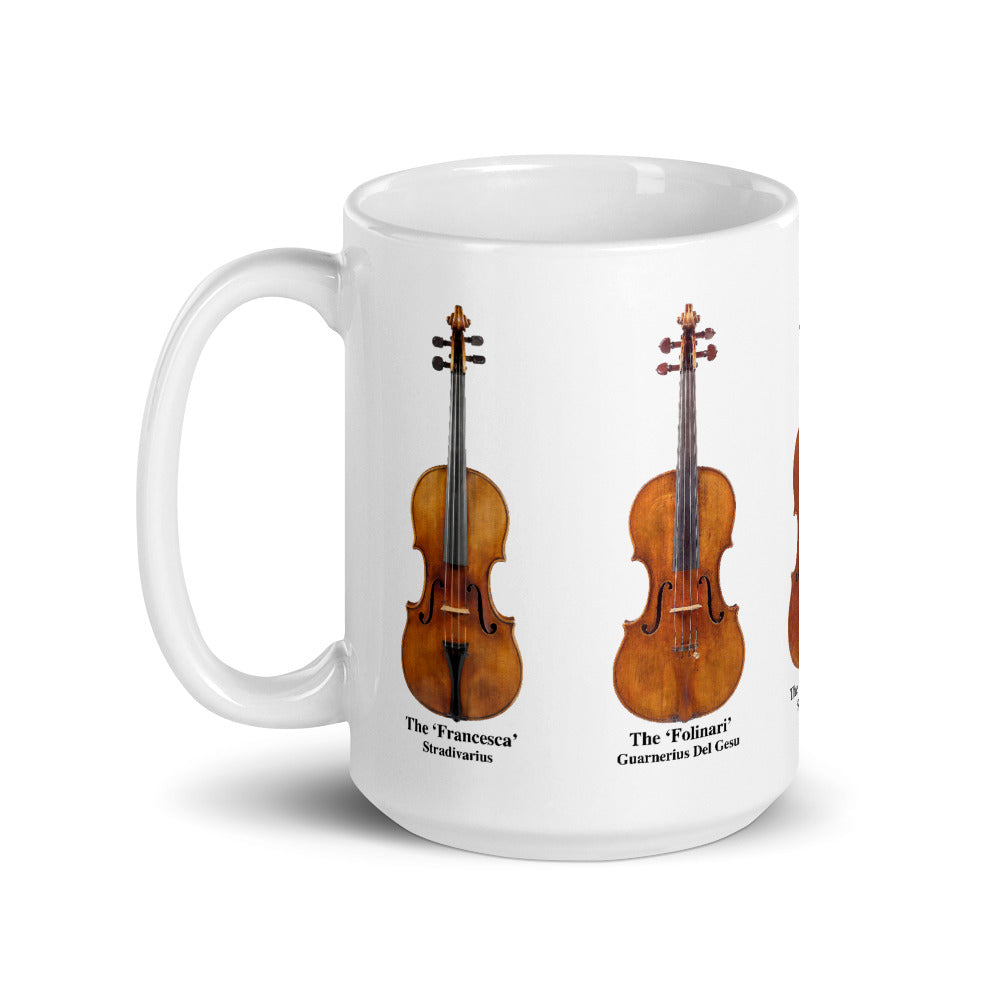Whether you're drinking your morning coffee, evening tea, or something in between – this mug's for you! It's sturdy and glossy with a vivid print that'll withstand the microwave and dishwasher.
• Ceramic
• Dishwasher and microwave safe
• White and glossy
"The Francesca" Violin

Antonio Stradivari, (Italian, Cremona 1644–1737 Cremona), has long been thought to have been an apprentice of Nicolò Amati, but census documents do not list Stradivari as a garzone (shopboy) in the Amati household. Stradivari's early instruments do show the stylistic influence of the Amati, but as Girolamo II and Nicolò were the principal makers in Cremona during Stradivari's formative years, it would be natural for Stradivari to have been influenced by their work. Antonio Stradivari worked with two of his sons, Francesco (1671-1743) and Omobono (1679-1742), and today over 600 instruments survive from this prodigious workshop. Stradivari experimented with the shape and arching of the violin. In 1690 he devised a somewhat longer and narrower body outline that is referred to as the "long pattern." By 1700 he abandoned this pattern and reverted to the broader shape that was typical of his earlier violins.
The ‘Folinari’ Guarnerius Del Gesu – 1.8 million euro

This is one of the only violins mase by Giuseppe Antonio Guarneri (1688-1744), known as Guarnerius de Gesu (of Jesus). It was made in Cremona in around 1725. In 2012 it was sold at auction to an anonymous buyer for approximately 1.8 million euros. Its price was justified by its rarity; it was only the second violin but the Italian maker to be auctioned in 10 years. Its history remains mysterious, it was discovered in Italy in the 1990s.
The ‘Lady Blunt’ Stradivarius

This record-breaking violin was sold for £84,000 at Sotheby’s in 1971, with the auction house calling on Yehudi Menuhin to demonstrate the quality of the violin. 40 years later, in 2011, the violin was once again put up for auction, by Tarisio, this time to help raise funds for two organisations involved in providing relief to victims of the natural disasters in Japan. It exceeded the record set by the ‘Molitor’ reaching 9.8 million pounds, more than 11 million euro.
The reason for this ridiculous price? Firstly, the exceptional condition of the instrument; made in 1721 by Antonio Stradivari, during his ‘Gold Age’, ‘The Lady Blunt’ has passed from collector to collector ensuring that it has remained in almost original condition. It has hardly been played and so was not subject to the alterations seen in most 18th century violins. From the hands of French luthier Jean-Baptiste Vuillaume it passed to Lady Anne Blunt, in the mid-19th century. It is she, daughter of Ada Lovelace and granddaughter of Lord Byron, who gives the precious violin its nickname.
The ‘Dorothy Delay’ Gaudagnini

Created by the Italian luthier Giovanni Battista Guadagnini (1711-1786), in 1778, the violin takes its name from its owner Dorothy Delay a great American violinist and teacher. She acted as assistant to Ivan Galamain at the Julliard School of Music, where Itzhak Perlman was studying at the time. She also taught violin to Albert Stern, Nigel Kennedy, Jean-François Rivest and Gil Shaham, before starting her own school.
It was auctioned for nearly a million euros at Tarisio in 2013, the highest officially recorded sum for a Guadagnini.
The ‘Red’ or ‘Mendelssohn’ Stradivarius

Its sale in 1990 for £902,000 was record breaking. Created in 1720, it was called ‘The Red Violin’ because of its vivid red hue. After being played, for a time, by Joseph Joachim it then seems to have disappeared for nearly 200 years before resurfacing in Berlin in the 1930s with Lili von Mendelssohn (a descendant of Felix Mendelssohn).
The heir of a wealthy American industrial family, the Pitcairns, acquired it in 1990. The violin was entrusted to his then only 16-year-old granddaughter, Elizabeth Pitcairn. The violin’s history and captivating colouring were the subject of a 1999 film The Red Violin, directed by François Girard.









